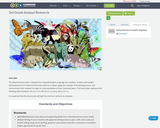
lesson plan for a student research project on animals
- Subject:
- English Language Arts
- Material Type:
- Activity/Lab
- Homework/Assignment
- Author:
- Isaac Simpson
- Date Added:
- 08/07/2020

lesson plan for a student research project on animals
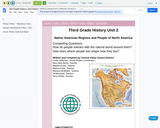
This unit on American Indians: By studying the regions of the United States and the cultures that live in each region, students are able to compare/contrast within regions and across regions how tribes used their environments, and their cultural and other contributions to American life.
Note that the emphasis here is on broader groups of tribes for each region with some instruction on specific tribes representing each region. In no way is this case study approach to learning about one tribe meant to be generalized to all tribes of that region. We understand that each tribe was and continues to be unique in its culture, practices, lifeways, and traditions.
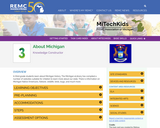
In third grade students learn about Michigan history. The Michigan eLibrary has compiled a number of websites suitable for children to learn more about our state. There is information on Michigan Native Americans, folklore, wildlife, birds, bugs, and much more.
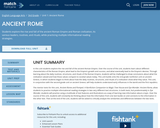
In this unit students explore the rise and fall of the ancient Roman Empire. Over the course of the unit, students learn about different characteristics of the Roman Empire, what lead to the Empire’s growth and success, and what eventually lead to the Empire’s demise. Through learning about the daily routines, structures, and rituals of the Roman Empire, students will be challenged to draw conclusions about what the civilization valued and how those values compare to societal values today. This unit builds onto the 2nd grade nonfiction unit on ancient Greece, in which students began to think about how the daily routines, structures, and rituals of a civilization show what they value. This unit, in conjunction with the second grade unit on ancient Greece, will help students understand early influences in the world and the first republics.
The mentor texts for this unit, Ancient Rome and Pompeii: A Nonfiction Companion to Magic Tree House and Eye Wonder: Ancient Rome, allow students to practice multiple informational reading strategies in two very different text structures. In both texts, but predominately in Eye Wonder, students will practice using a multitude of text features and illustrations as a way of learning new information about a topic. Over the course of this unit, students will constantly be thinking about how the information from one text builds on and connects to the information in the other text. Then at the end of the unit, students will be asked to critically analyze the similarities and differences between the two texts.
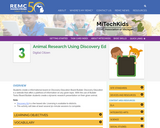
Students create a informational board on Discovery Education Board Builder. Discovery Education is a website that offers a plethora of information on any given topic. With the use of Builder Tools/Board Builder students create a dynamic research presentation on their given animal.

This curriculum builds upon many years of educating students in the garden and scales up content across grades and lessons for instructional scaffolding. It is designed as an interactive teaching tool to be co-taught with classroom teachers and garden instructors as leads. Each lesson connects directly to standards: Next Generation Science, Common Core State, Physical Education, and Environmental and Health Education. The concise and easy to-follow lessons are a packed 45 minutes for preschool through fifth grade. Flexibility is important, so some lessons include several activities that teachers can choose from to accommodate their lesson plans. Consistency is also important, so lessons follow themes and structures found in the Curriculum Map. 360 pages.

LEARNING TO WRITE BIOGRAPHIES
Discuss biographies previously read
Students will write a biography about one of the people they have read about. They will use information from one of these books and information from an online source to plan and write the biography.
Review Writing Process
Create Graphic Organizer model
Informative Writing Checklist
Students will work in their research groups and choose 3-4 subtopics. Then students will begin the graphic organizer.
Sharing
Use the Smartboard or projector to display www.factmonster.com.
Students will continue to work in their research group. They need to complete their research from the class book quickly and begin their search with source two.

Students learn about chameleons as they read, write, listen, and create.

Students learn about dolphins as they read, write, listen, and create.

Students learn about ducks as they read, write, listen, and create.
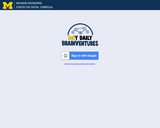
Students learn about foxes as they read, write, listen, and create.

Students learn about foxes as they read, write, listen, and create.

Students learn about sharks as they read, write, listen, and create.

Students learn about how crayons are made as they read, listen, write, & create.

Students learn about owls as they read, write, listen, and create.
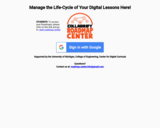
Students learn about the pyramids of Egypt and create a final product to demonstrate their learning.

Students learn about sea turtles as they read, write, listen, & create.

Students learn about sharks as they read, write, listen, and create.

Students learn about snakes as they read, write, listen, and create.

Students learn about tigers as they read, write, listen, and create.